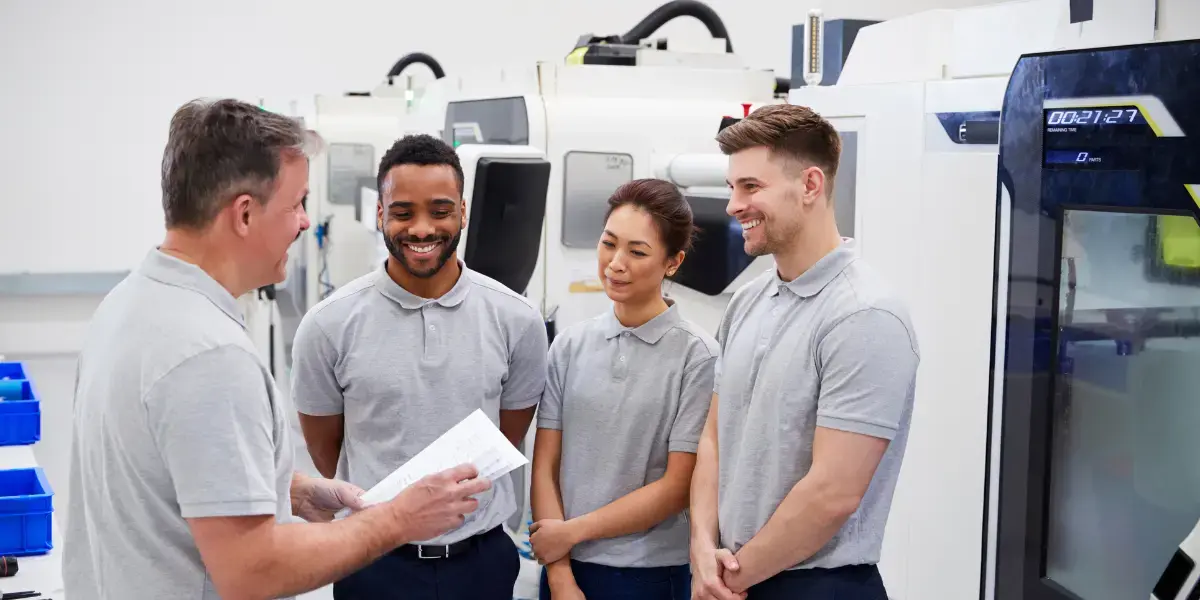Bridging the Manufacturing Skills Gap on the Plant Floor
The manufacturing skills gap has been a national discussion for the last 15 years. In the most recent status report The Skills Gap in Manufacturing in 2015 and Beyond said, “Over the next decade nearly 3.5 million manufacturing jobs likely need to be filled. The skills gap is expected to result in 2 million of those jobs going unfilled.” This is a problem of increasing national importance, but we still have one of the largest and strongest manufacturing industries in the world. This isn’t our first major challenge and it won’t be the last, but we can use this chance to prove our status as one of the best manufacturers in the world.
Why the Skills Gap is a Problem
Among a litany of other challenges, the skills gap will make it increasingly difficult:
- To meet customer demand
- To implement new technologies
- To develop new products
- To improve operational efficiency (costs will go up)
- To maintain workplace culture and safety
The problem gets worse the longer it goes unaddressed. As Baby Boomers retire, companies stand to lose vast amounts of knowledge and experience. Employees with years on the job have developed their own processes and methodologies from which their companies benefit, but those companies often have no formal documentation or processes in place to capture that knowledge.
Bridging the Gap with Training and Development
Among manufacturers surveyed in the Skills Gap report, “94% agree internal employee training and development programs are among the most effective skilled production workforce development strategies.”
When manufacturers emphasize Workforce Development and Training, they experience long term gains and improvements in efficiency, personnel performance, equipment performance, and quality. It goes without saying that skilled employees enhance the entire work environment on many levels, but we also know that investing in Workforce Development and Training leads to less conflicts, quicker troubleshooting, and higher productivity.
A Real Wold Case Study
In early 2005, an established and respected Southern Beverage bottling facility released a Workforce Readiness Statistics document that focused on both the company’s existing workforce and technology statistics as well as the existing labor pool and technology statistics. The findings were, to say the least, alarming.
- The company realized that within the next ten (10) years 35% of its workforce would begin retiring.
- Within the next fifteen (15) to twenty (20) years (by 2020 – 2025) the company would likely realize a 60 - 75% employee turnover of its’ most seasoned and experienced employees.
- On average, workers over the age fifty-five (55) had 50% - 60% less experience in computer based skills.
It was imperative that the knowledge base of the 65%+ long-term employees scheduled to retire not be lost with their retirement. And, technology was quickly outpacing the skills and, possibly, abilities of much of its existing workforce to operate the automation- based equipment. Equipment modifications and new installations meant that upwards of 40% of employees, planning to remain fifteen to twenty years, must update and improve their technical and mathematical skills.
Addressing the Manufacturing Skills Gap at the Plant Floor
If there is a skill problem, there is a training problem. Actions have to be taken quickly and onboarding failure is not an option. According to the case study “Aging Workforce Drives On-Boarding” the best opportunity for veteran employees to help the organization is to engage in an Instructor Certification Program (ICP) and participate in transferring knowledge to the upcoming employees. This is critical for a company to retain and grow the skills and talent that veteran workers have gained. The key with this approach is that the experienced employees receive the proper training methodologies through the ICP workshop.
Providing periodic classroom trainings will not do enough to build employees’ capabilities. Workforce Development and training programs must be based on a holistic training strategy that includes both internal and external experiences, technical and soft skills aligned to both the skills the company currently needs and the skills they will need in the future. Conducting a skills inventory of the total manufacturing plant floor workforce will provide the basis for the development tools needed to bring the workforce to a level to meet company goals and objectives.
- Companies can build integrated development strategies that not only include formal training, but also informal training, knowledge sharing, apprenticeship, leadership soft skills, and ongoing performance support and coaching.
- New learning technology can help companies reinvent their learning and development strategies.
- Experiential training can also be just as important as training inside a classroom. Employees can learn just as much, if not more, from deployments across various departments, with different teams, and different management.
Polytron was engaged to collaborate and assist in finding ways for the client to meet their operational goal by formalizing and implementing a workforce development and training plan of action while the company focused on community awareness.
A Large Scale Solution
The decision to create a holistic Workforce Development and training program would involve an initial investment of time and money, but the rewards would outweigh the risk if a training program is properly designed to enhance the production process and the training itself (classes, documentation, and reinforcing events) is designed around the employees’ needs when working within that process.
According to Flexstudy.com an employee who gains the additional skills needed for a job offers better results for the company. This would reduce overall production time, offer a higher quality product or service, and give employees a better sense of self worth. When manufacturing companies begin to source more positions from inside their walls, they help create a culture of development and growth.
The Approach
A two-year Workforce Development and Training plan within the company was initiated to determine the skills required for each position. Job classifications were created, formalized and skill sets and performance standards were associated with each job, and training courses for each skill set were identified, developed, and entered into the company’s Learning Management System (LMS).
To ensure a consistent knowledge transfer methodology, an Instructor Certification Program (ICPSM) to provide core competency training skills was offered to those who would be providing the second-generation equipment and on-the-job training. The program included classroom and a hands-on application using new training job aids, and observation feedback. A record 12% attended and became certified instructors
The Benefits
The Workforce Development and Training Plan has been a success. Having skill sets assigned to job descriptions has increased department managers’ awareness for the necessity of ongoing training for existing employees and as a requirement for new hire on-boarding. Class sign-up via the company Intranet and subsequent tracking has increased by 60% over two years.
And, the Instructor Certification Program has been a success. As the number of Certified Trainers has increased, the number of existing employees willing to share information with new hires has increased. A surprising by-product of the Workforce Development and Training program is that many older employees have exhibited a greater interest in knowledge exchange – closing the gap in expected information loss through attrition, and making their remaining years on the job more productive. Read the full case study, Aging Workforce Drives On-Boarding.


